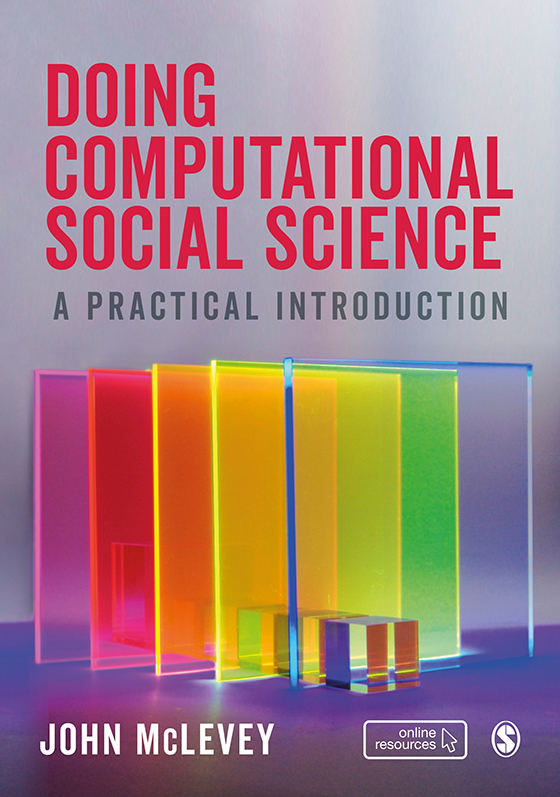
Doing Computational Social Science
A Practical Introduction
John McLevey - University of Waterloo, Canada
Computational approaches offer exciting opportunities for us to do social science differently. This beginner’s guide discusses a range of computational methods and how to use them to study the problems and questions you want to research.
It assumes no knowledge of programming, offering step-by-step guidance for coding in Python and drawing on examples of real data analysis to demonstrate how you can apply each approach in any discipline.
The book also:
- Considers important principles of social scientific computing, including transparency, accountability and reproducibility.
- Understands the realities of completing research projects and offers advice for dealing with issues such as messy or incomplete data and systematic biases.
- Empowers you to learn at your own pace, with online resources including screencast tutorials and datasets that enable you to practice your skills and get up to speed.
For anyone who wants to use computational methods to conduct a social science research project, this book equips you with the skills, good habits and best working practices to do rigorous, high quality work.
Available formats
See what’s new to this edition by selecting the Features tab on this page. Should you need additional information or have questions regarding the HEOA information provided for this title, including what is new to this edition, please email sageheoa@sagepub.com. Please include your name, contact information, and the name of the title for which you would like more information. For information on the HEOA, please go to http://ed.gov/policy/highered/leg/hea08/index.html.
For assistance with your order: Please email us at textsales@sagepub.com or connect with your SAGE representative.
SAGE
2455 Teller Road
Thousand Oaks, CA 91320
www.sagepub.com
